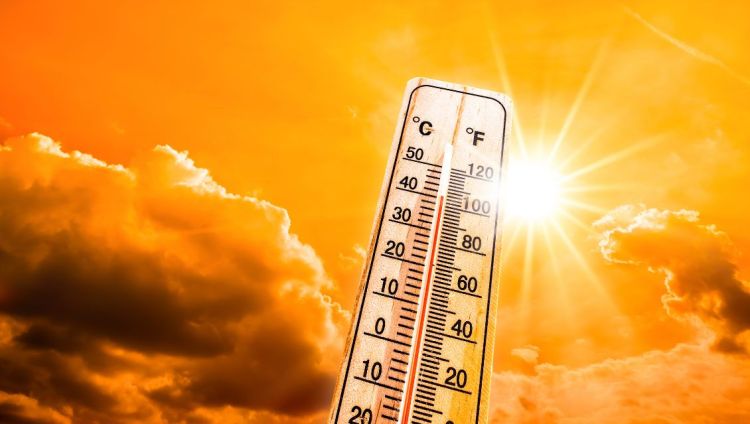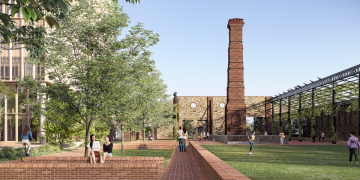Climate change and rising temperatures can feel overwhelming. But a new strategy looks at how Adelaide can tackle the problem – with a little help from you.
Feeling the heat? You’re not alone. Between heatwaves, eco-anxiety and the occasional doomscroll, it’s easy to feel overwhelmed by the climate crisis.
But a new plan for metropolitan Adelaide is reminding us we don’t need the whole answer to make a difference – just resilience and hope built close to home, one pot plant, verge garden, or street tree at a time.
The Urban Greening Strategy for Metropolitan Adelaide sets a big goal: grow the city’s tree canopy from 16.7 per cent to 30 per cent by 2055.
And there’s plenty you can do to help, even without owning land or planting your own trees.
“You don’t need land to be part of the solution,” says Melissa Martin, Team Leader of Communication at Green Adelaide. “Just a balcony, a pot, or a couple of free Saturdays.”

How Adelaide’s getting greener – and why it needs your help
The Urban Greening Strategy is Adelaide’s game plan for protecting and expanding green space across the city – not just in parks, but along footpaths, rooftops, verges and schoolyards.
Covering Greater Adelaide – that’s the city and its suburbs – it’s about keeping the whole region liveable as the climate heats up.
Coordinated by Green Adelaide on behalf of the state government, the strategy was developed with councils, arborists, planners and community groups.
It’s been kickstarted with $1.5 million in state government grants, matched by five metro councils, to get real projects off the ground – from treelets and rain gardens to stormwater upgrades and native plantings.
The idea is simple: As the city grows, greenery should grow with it. Because once it’s gone, it’s a lot harder to get back.
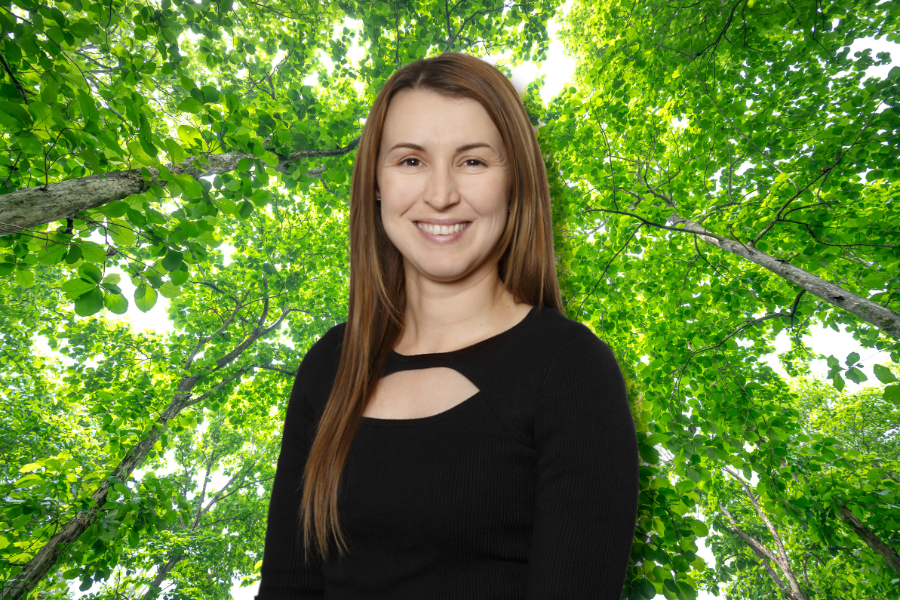
Why this matters – especially if you rent or feel the heat
For many younger South Australians – especially renters or apartment-dwellers – staying cool in summer can be a real struggle.
If you’ve ever tried to nap in a heatwave in a brick-veneer rental, you get it. Urban heat doesn’t affect everyone equally – and renters are often hit hardest.
And while planting a tree won’t fix dodgy insulation, it can help cool your building in the long term: A building surrounded by grass and trees can be noticeably cooler inside than one surrounded by concrete and asphalt – especially during heatwaves.
“Hitting 30 per cent canopy means cooler footpaths, more shaded bus stops, lower energy bills [thanks to less aircon], and the return of birdsong,” says Melissa. “Even if your only plants live on the balcony, you’ll feel the benefits – cleaner air, calmer streets, and a stronger sense of place.”

Cooler streets, calmer minds
Greener neighbourhoods don’t just look good – they’re better for your body, brain and mood.
“Greener spaces mean cleaner air, less stress, and better mental health,” Melissa says. “They encourage movement, connection, and even improve sleep and concentration.”
“New trees start making an impact in just 3-5 years. Planting now means a more comfortable future – with less heat stress during extreme weather, particularly in tree-poor areas.
“It’s wellbeing you can feel – one tree at a time.”
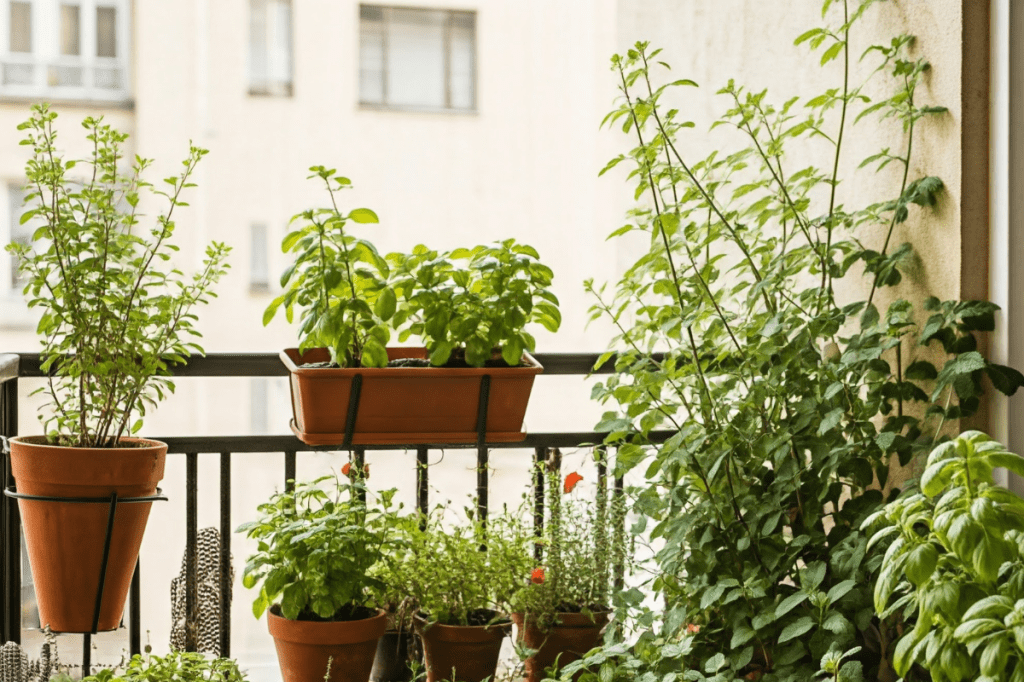
So what can you actually do? A lot, it turns out
Melissa says even the smallest acts – like joining a planting day or adding a herb garden to your balcony – help build the city’s resilience to climate change.
“Climate resilience is built through these small, shared actions,” she says. “Start with whatever piques your interest – a frog-spotting walk, a weeding bee, even a course all about native bees. They all count, and you’ll meet great people too.”
She’s seen it firsthand. “A 14-year-old turned a vacant patch in Eden Hills into a native pocket park with support from her community and a Grassroots Grant from Green Adelaide. No backyard required.”
Want to go bigger? Checkout Green Adelaide’s online dashboard to find hot spots in your area – and develop a key understanding of where urban greening can have the biggest impact for Greater Adelaide. “It’s citizen-driven change, backed by evidence,” says Melissa.
Here are some of the ways you can help green your street – and your city.
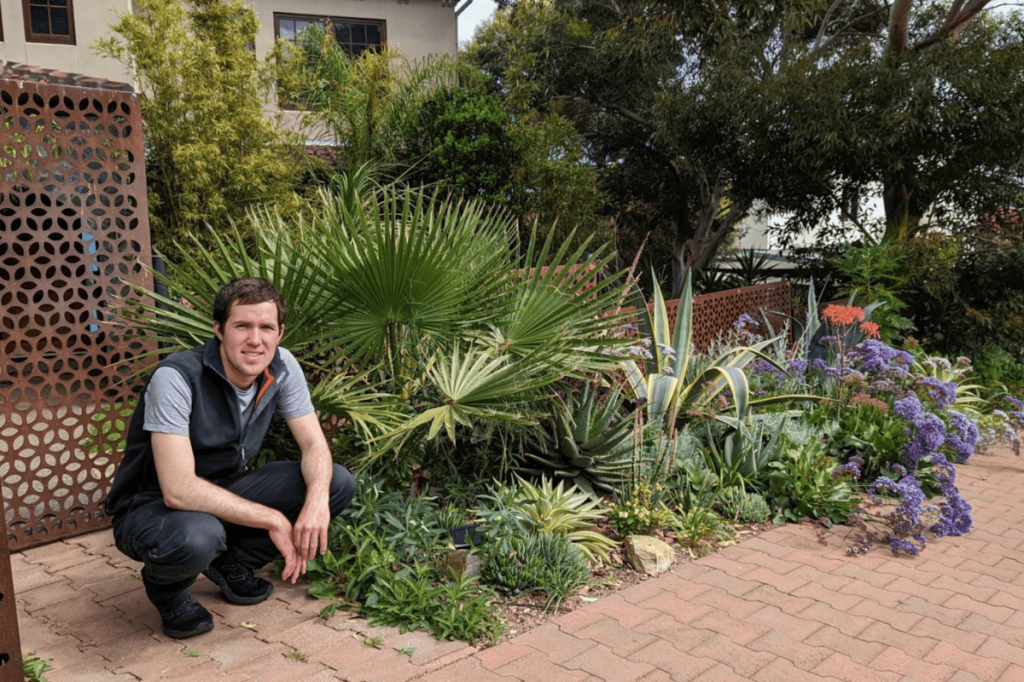
Start small (yes, pot plants count)
- Add potted natives or herbs to your balcony or windowsill
- Set up a verge garden (Check with your local council first, they may help with the cost or advice on what to plant)
- Join a local planting day or care for a street tree
Get sciencey (no lab coat required)
- Download FrogSpotter or iNaturalist and help track urban wildlife
- Join the Marine Debris Program and log plastic pollution
- Use Green Adelaide’s tree canopy map to learn where urban greening can have a big impact
Learn and grow
- Sign up for a free native gardening or nature photography course
- Listen to the Green Adelaide podcast or join their monthly online seminars
- Explore cool and quirky workshops at your local environment centre (think mushroom foraging, kombucha making, or habitat gardening)
Apply for a grant
- Got an idea to green your school, street or apartment block?
- The Grassroots Grants are open to individuals and groups
- Cooler, Greener, Wilder grants support bigger council-led projects
Want even more ideas?
Green Adelaide’s website has the latest inspo, info and updates on how to get involved – to make Adelaide cooler, greener and wilder.
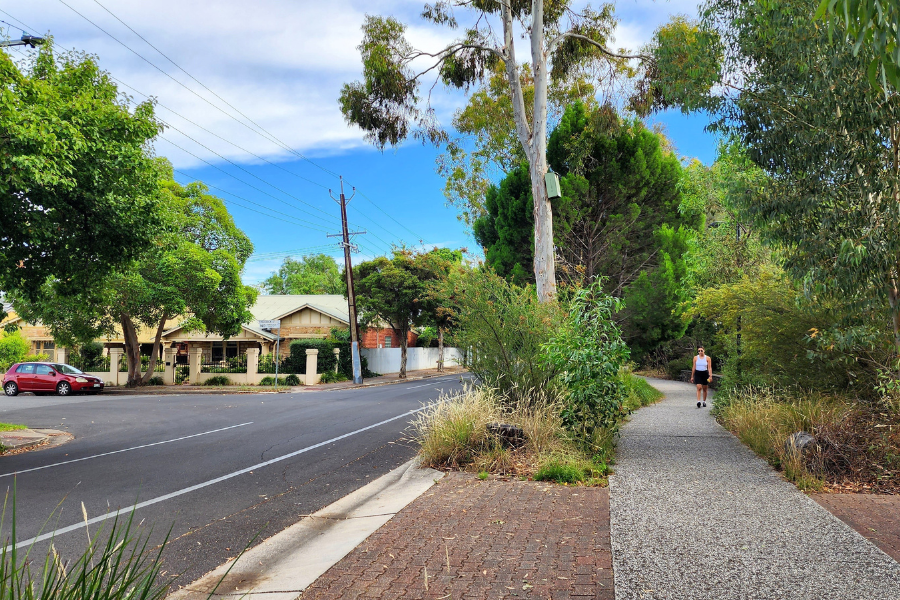
Spot the gaps and track the greening – with the dashboard and app
Green Adelaide’s online dashboard maps tree canopy, heat, and land use across Adelaide. Use the linked app to zoom in to your street to see how leafy (or not) it is – and where your neighbourhood heats up the most.
The app tracks changes in tree canopy and heat between 2018/19 and 2022, and shows which suburbs are cooling down – or warming up. You can see urban heat islands (up to 3-4 °C hotter than their surroundings), impermeable surfaces, and even which areas lost or gained canopy due to development.
This 2022 dataset sets a baseline, and Green Adelaide plans to repeat it every two years – so over time, we’ll be able to see the impact of more trees, smarter stormwater use and government-led community action.
Melissa says it’s a tool built for locals – and if enough people use it, notice gaps, and learn how to track where urban greening can have the greatest impact – this can drive the greening of your neighbourhood.
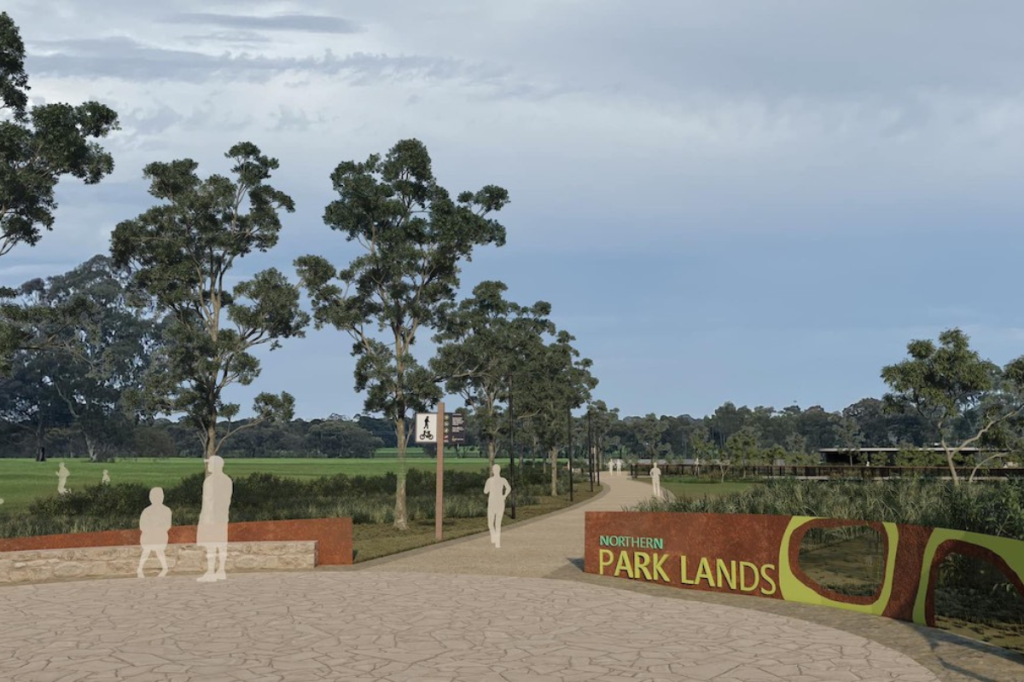
Where this is all heading
By 2035, you could be walking down a street that’s measurably cooler – lined with climate-resilient trees, fed by smart stormwater inlets. By 2055, if the strategy stays on track, Adelaide could be one of the greenest, most liveable cities in the country.
That’s especially important as the city grows. Greater Adelaide is expected to welcome around 670,000 new residents by 2050 – the equivalent of the entire population of the Gold Coast moving here.
The greening strategy ties into the Greater Adelaide Regional Plan, which maps out where 315,000 new homes will go and how to make sure green space isn’t lost in the process.
One of the biggest projects is the new Northern Park Lands – set to be 39 per cent larger than the Adelaide Park Lands. Located south of Gawler, it will be nearly 1000 hectares of natural open space, playing fields and walking trails being developed in Adelaide’s north.
“By 2055, Adelaide could be a leafy, climate-adapted city where green space isn’t a luxury – it’s a lifestyle,” says Melissa.
Your corner counts
Adelaide’s future won’t be built on policies alone – it grows on balconies, in verges, and in everyday choices.
Pot plant or podcast, verge garden or veggie patch – whatever your vibe, you’ve got a role to play in building a city that’s greener, cooler and more hopeful.
Inspired? Find the Urban Greening Strategy for Metropolitan Adelaide, plus more info you need to help make Adelaide greener here.


